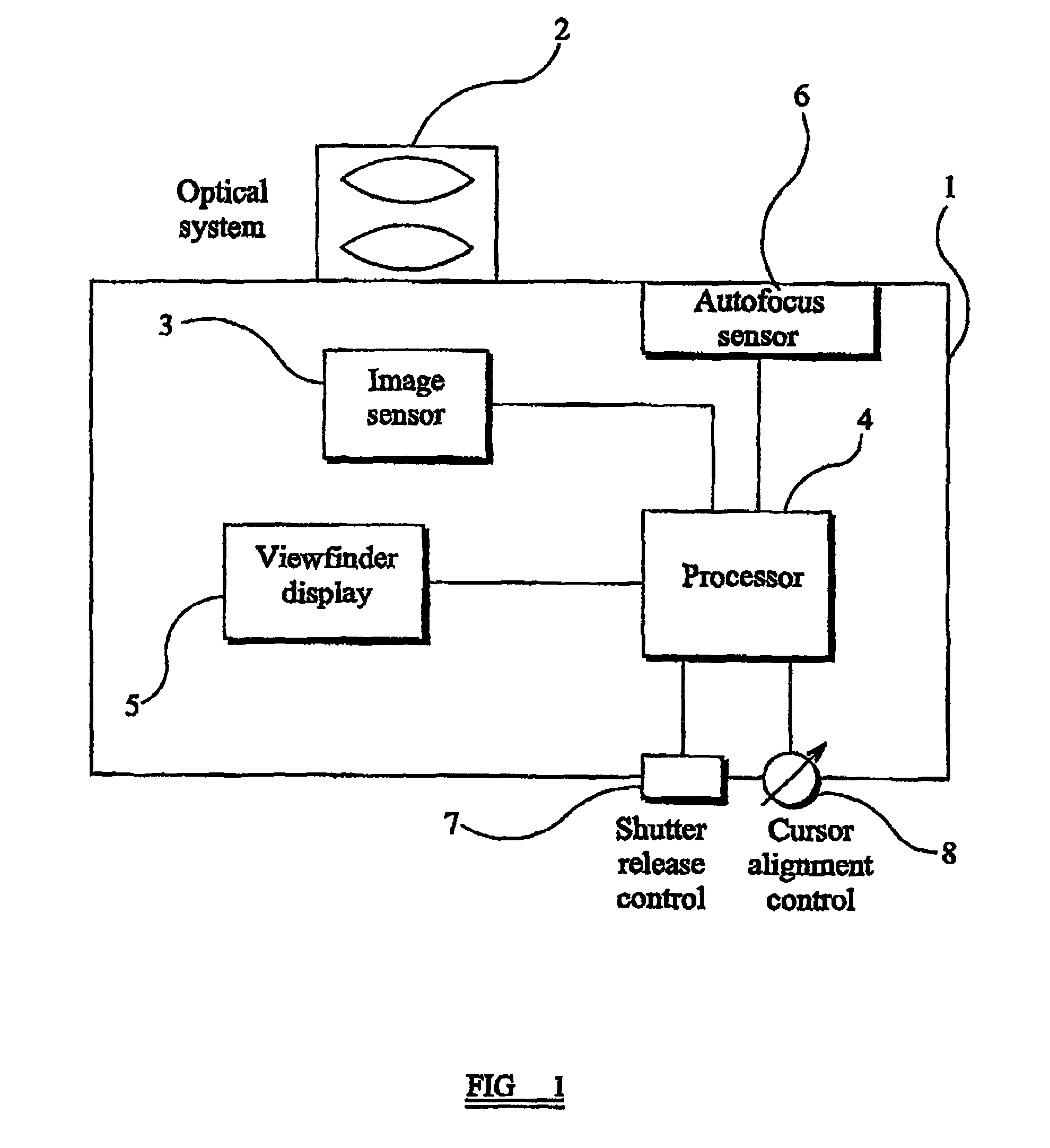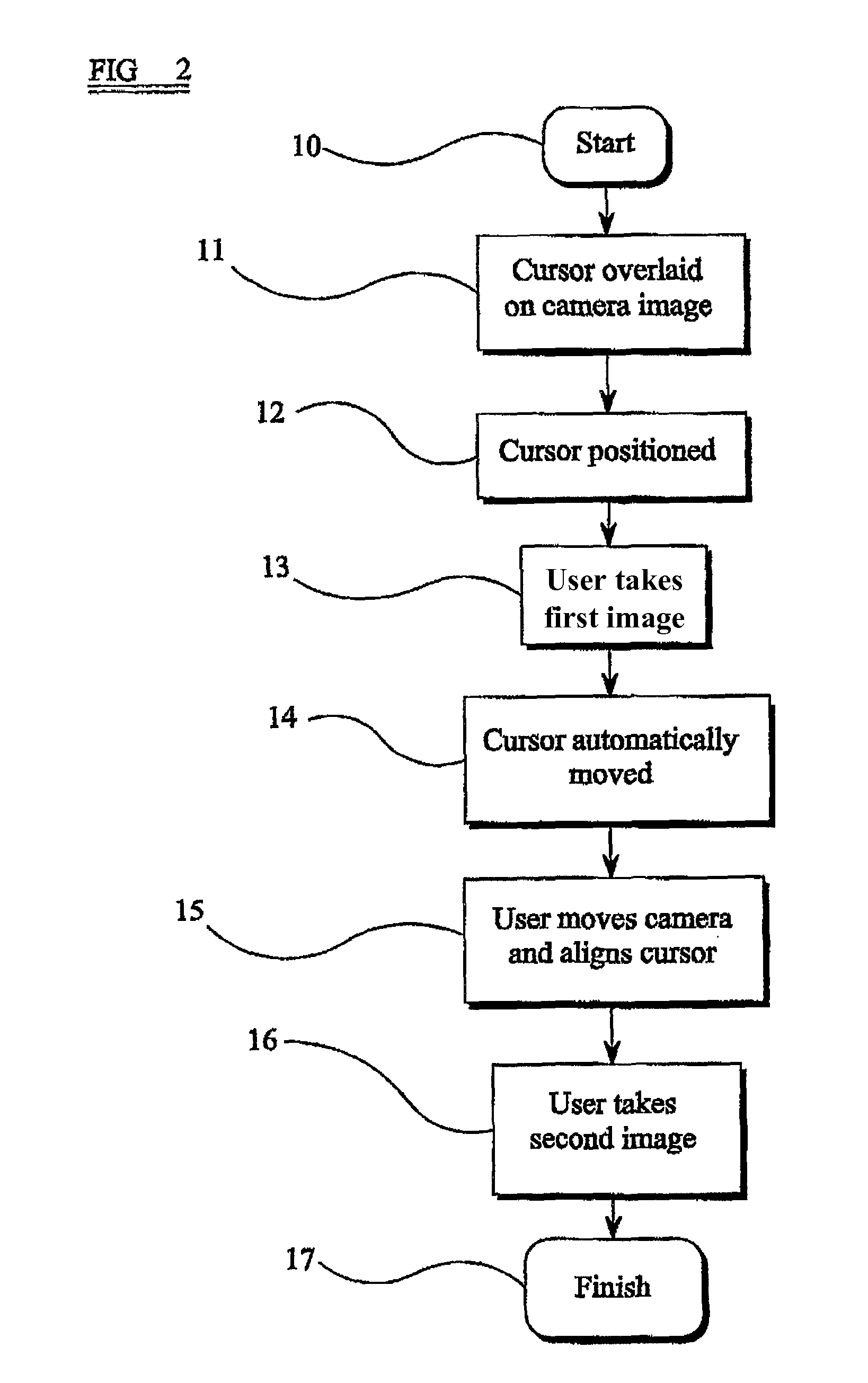Method of and apparatus for selecting a stereoscopic pair of images
a stereoscopic and image technology, applied in the field of stereoscopic pair selection methods and apparatuses, can solve the problems of poor image quality, poor image quality, and difficulty in identifying the image,
- Summary
- Abstract
- Description
- Claims
- Application Information
AI Technical Summary
Benefits of technology
Problems solved by technology
Method used
Image
Examples
Embodiment Construction
[0049]FIG. 1 illustrates an apparatus constituting an embodiment of the invention in the form of a digital “still” camera 1. The camera 1 comprises an optical system 2 of conventional type for forming an image of a scene. The camera 1 also comprises a conventional image sensor 3 on which the image is formed and which converts the optical image into corresponding electrical signals. The output of the image sensor 3 is connected to a processor 4, which processes the sensor signal in any suitable way, for example for display and subsequent printing to a hard copy. The processor 4 has an output connected to a viewfinder display 5, for example of the colour liquid crystal display (LCD) type.
[0050]The optical system 2 comprises a set of lenses and a motor or the like for adjusting the positions of the lenses or lens groups to perform focusing. The camera 1 is of the “autofocus” type and includes an autofocus sensor 6, which supplies to the processor 4 information about the distance from t...
PUM
 Login to View More
Login to View More Abstract
Description
Claims
Application Information
 Login to View More
Login to View More - R&D
- Intellectual Property
- Life Sciences
- Materials
- Tech Scout
- Unparalleled Data Quality
- Higher Quality Content
- 60% Fewer Hallucinations
Browse by: Latest US Patents, China's latest patents, Technical Efficacy Thesaurus, Application Domain, Technology Topic, Popular Technical Reports.
© 2025 PatSnap. All rights reserved.Legal|Privacy policy|Modern Slavery Act Transparency Statement|Sitemap|About US| Contact US: help@patsnap.com



